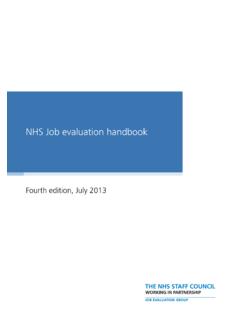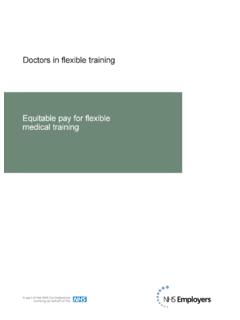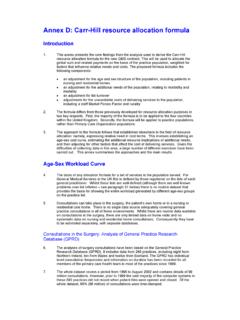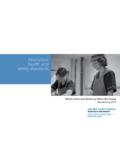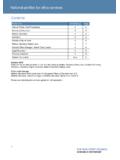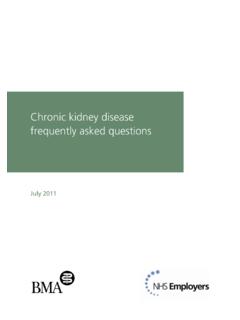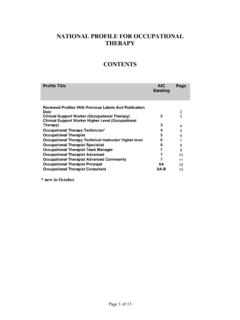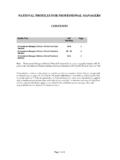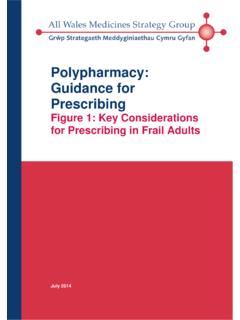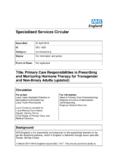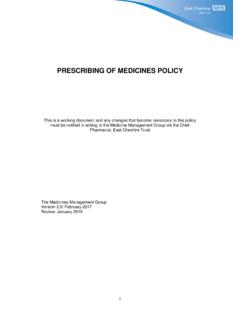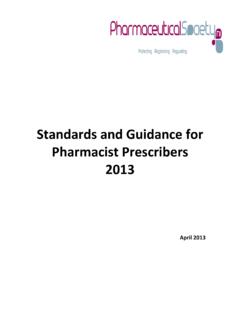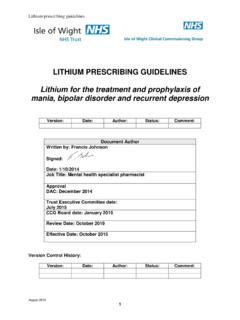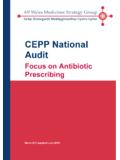Transcription of GUIDANCE FOR THE IMPLEMENTATION OF REPEAT …
1 DECEMBER 2013 GUIDANCE FOR THE IMPLEMENTATION OF REPEAT DISPENSINGD ecember 2013 GUIDANCE for the IMPLEMENTATION of REPEAT dispensing2 IntroductionTwo thirds of prescriptions generated in primary care are for patients needing REPEAT supplies of regular medicines and as such, account for a significant workload for general practices. Many of the patients receiving these prescriptions have relatively stable community pharmacy REPEAT dispensing service offers potential benefits to prescribers, practices and patients for the safe and efficient continued supply and management of regular medicines. The service is designed to ensure clinical supervision is maintained by means of appropriate patient selection criteria and robust standard operating procedures within the GUIDANCE has been produced jointly by NHS Employers, the General Practitioners Committee of the BMA and the Pharmaceutical Services Negotiating Committee. It highlights the potential benefits to practices and patients, and provides ten top tips for successful piloting, the REPEAT dispensing service was introduced into the NHS community pharmacy contractual framework in April 2005.
2 The service specification and Regulations clearly set out how the service should be provided and require pharmacies to have appropriate governance arrangements for the management of the is REPEAT dispensing ? REPEAT dispensing is an alternative model for prescribing and dispensing regular medicines to patients on stable long term treatment, where REPEAT supplies are managed by the patient s pharmacy of choice. There are a number of differences and added benefits between the REPEAT dispensing model and traditional REPEAT prescribing processes, including: the prescriber produces a repeatable prescription and a set of identical batch forms the number required is equal to the number of times the prescription is to be repeated and this is to be indicated on the form, for example, 1 of x, 2 of x each repeatable prescription can be dispensed at regular intervals, for example, monthly for a period of up to 12 months a dispensing interval does not have to be set by the prescriber, so that the pharmacist has maximum flexibility to make a professional decision when to dispense the next supply for the patient.
3 This is of particular benefit for patients who may be travelling or if the prescription is for seasonal medicines or when required medicines patients will call at their chosen pharmacy for their continued supply of medicines without the need to reorder prescriptions during the life of the repeatable prescription the outstanding repeats left on the prescription can be cancelled and the remaining batch issues destroyed as and when required, to respond to changes in medicines, clinical condition or patient circumstances the batch forms can be stored securely at the pharmacy or retained by the patient the duration of the repeatable prescription can be aligned to a patient review, monitoring procedure or other clinical and administrative functions of the practice at the point of dispensing each instalment, the pharmacist will be responsible for checking patient adherence and other clinical factors that are relevant to the appropriateness of the continued supply, for example, whether there are any problems the patient may be encountering with their medicines, whether the patient has recently been in hospital or had changes made to their medication regimen.
4 Any issues of concern to the pharmacist will be reported to the 2013 GUIDANCED ecember 2013 GUIDANCE for the IMPLEMENTATION of REPEAT dispensing3It is possible for a patient to be issued with more than one repeatable prescription concurrently for example, to manage medicines with different dispensing some areas REPEAT dispensing is known as batch prescribing .When GP practices implement release 2 of the electronic prescription service (EPS), an electronic version of the REPEAT dispensing model will be available to issuing a repeatable prescription in release 2 of the EPS, the prescriber authorises a prescription with a specified number of issues; each issue contains the same prescribed items. The Spine will then manage the release of each individual prescription issue. The first issue of the prescription will be available as soon as the prescription is received by the Spine, subsequent issues will be created on the Spine ready to be pulled down by the patient s nominated pharmacy once a previous issue is deemed complete (that is either dispensed or marked as not dispensed).
5 To allow pharmacists to prepare medicines for dispensing in advance of a patient visiting the pharmacy, the Spine will automatically send the nominated pharmacy a REPEAT dispensing prescription seven days before the expected end date of the previous issue of the prescription. It is possible for a pharmacy to pull down issues in advance of them being sent automatically from the issuing an electronic repeatable prescription, prescribers are required to always issue a Repeatable Prescription Authorising Token .Patient selectionRepeat dispensing is a model for people on stable, long term medicines and will not be suitable for all patients, especially those with acute, newly diagnosed or unstable conditions. REPEAT dispensing is also unsuitable for the provision of controlled of suitable patient groups/situations: patients on single, stable therapy, for example, Levothyroxine patients with stable long term conditions on multiple therapy for example, hypertension, diabetes, asthma patients that can appropriately self manage seasonal conditions in preparing for, and during, a flu benefits of REPEAT dispensingFor the GP and practice: reduction in workload issuing and re authorising REPEAT prescriptions reduced medicines waste earlier detection of medicines related the patient.
6 Improved access to regular medicines simplified one stop process for obtaining next supply of medicines regular contact with pharmacist to discuss medicines related issues pharmaceutical support for self care and the management of long term 2013 GUIDANCETop ten tips for successful implementationRepeat dispensing has been successfully implemented in a number of GP practices. Here are the top ten tips gathered from GPs, practice managers and pharmacists:1Be prepared to invest some set up time at the practice. This is an invest to save process Start small increase numbers and expand selection criteria as patient and practice confidence communication between the practice and pharmacy maximum benefits will be gained with good working a named lead in both the practice and pharmacy to take forward IMPLEMENTATION and ensure regular two way communication. Practices and pharmacists must be responsive to changes in patients medicines requirements and have appropriate communication channels for notification of changes, cancellations or referral back to the your clinical system or contact your system supplier to find out how to activate and use the REPEAT dispensing patient selection criteria that will allow for easy identification and smooth running of the service.
7 In many successful cases, patients have been identified by the pharmacy and then referred to the the total duration of the repeatable prescription to coincide with reviews or procedures and any functions that have Quality and Outcomes Framework (QOF) points all staff at the practice and pharmacy are aware of the service and fully understand the processes clinical information is to be shared between the pharmacist and the prescriber, explicit patient consent is required. This consent may be written or verbal but practices should record when and how consent was communication with the patient is paramount. The service will fail if patients continue to reorder their prescriptions as before or become practical guide to REPEAT dispensing has been produced by the National Prescribing Centre dispensing with repeats (2nd edition) September 2008 More details on the service can be obtained from December 2013 GUIDANCE for the IMPLEMENTATION of REPEAT dispensingwThis publication was produced by the NHS Confederation publications team: document is available in pdf format at Published June 2012.
8 Updated December 2013. NHS Employers 2013. This document may not be reproduced in whole or in part without permission. The NHS Confederation (Employers) Company Ltd. Registered in England. Company limited by guarantee: number 5252407 Ref: EGUI24001 NHS Employers Services Negotiating Committee Practitioners Committee
